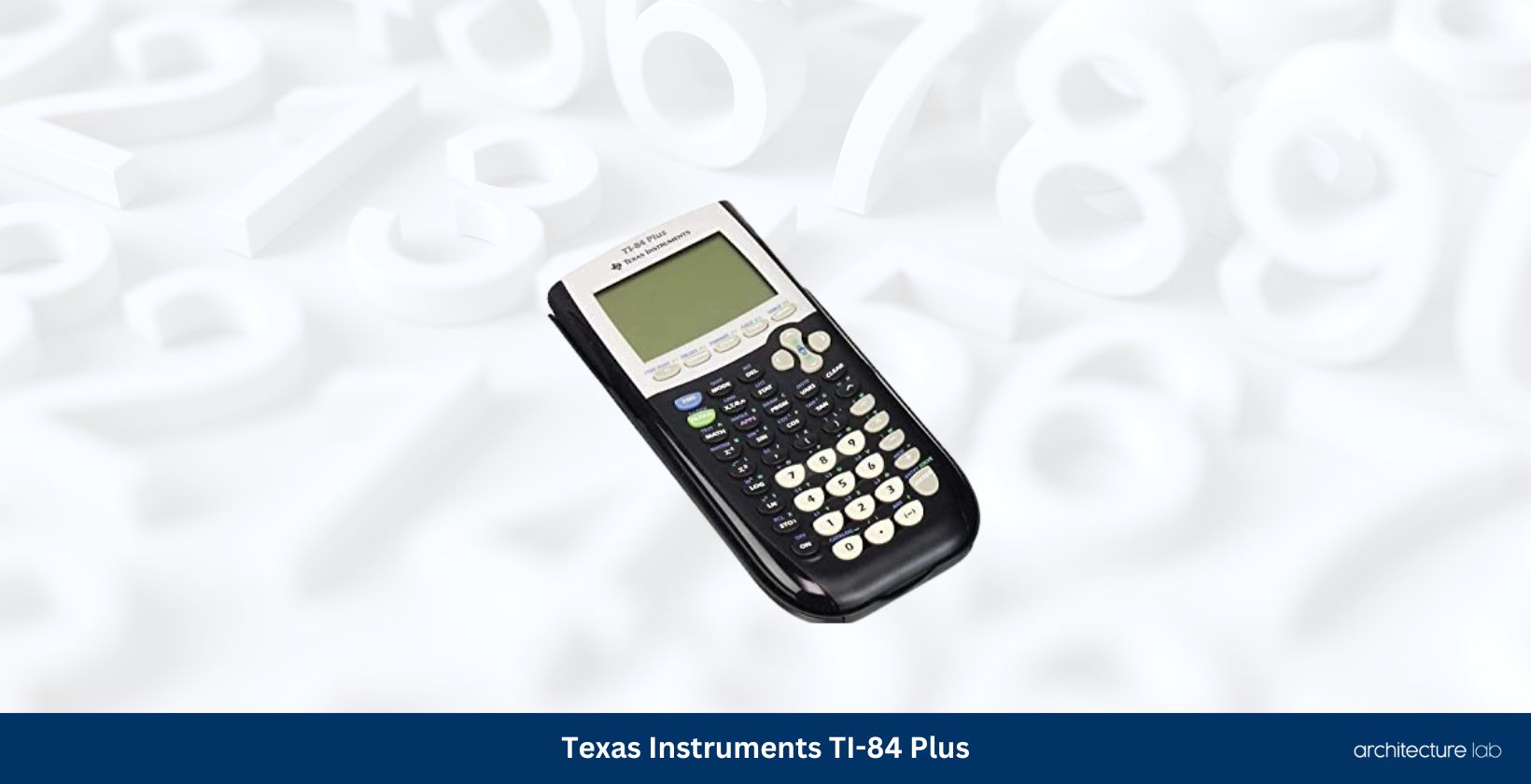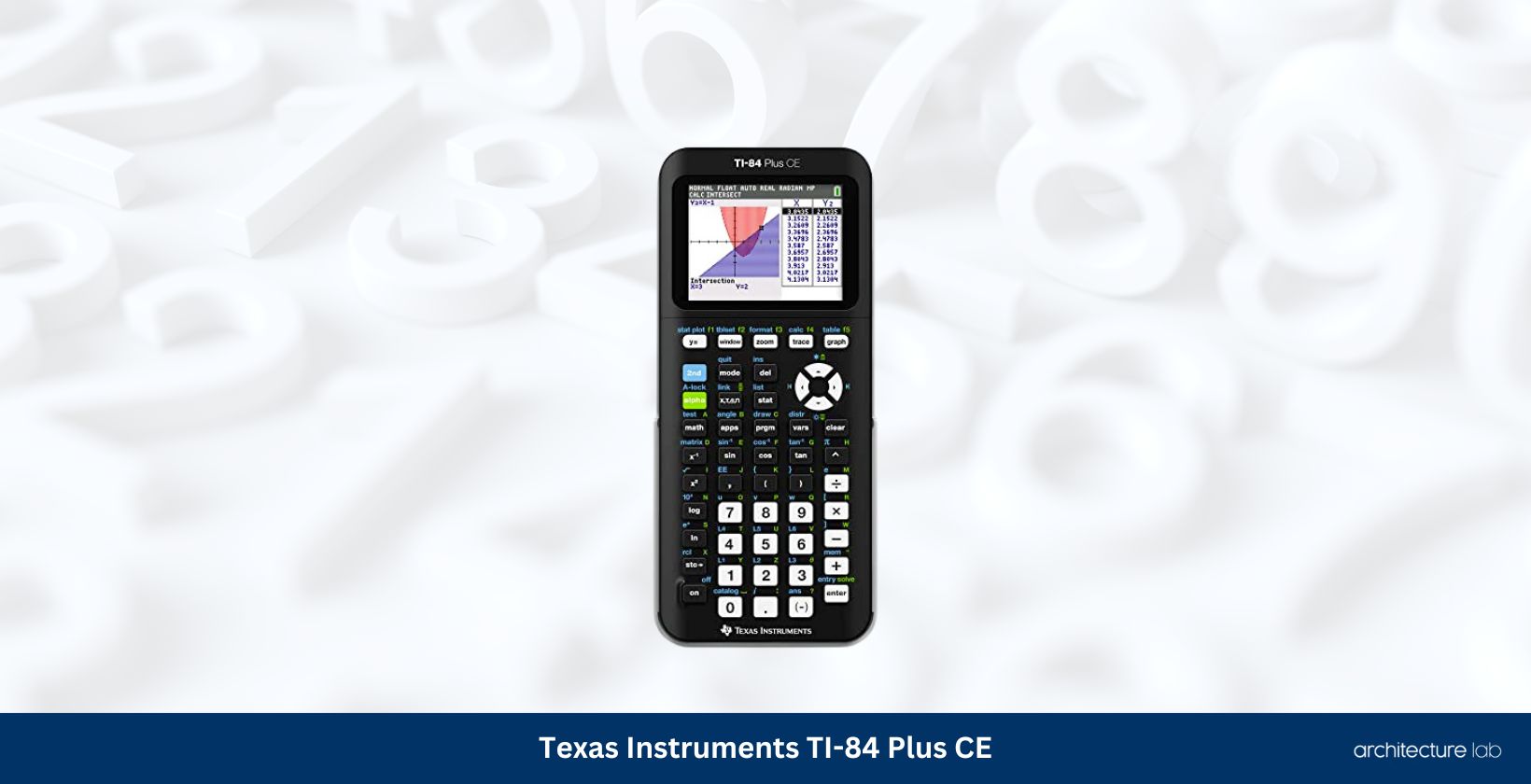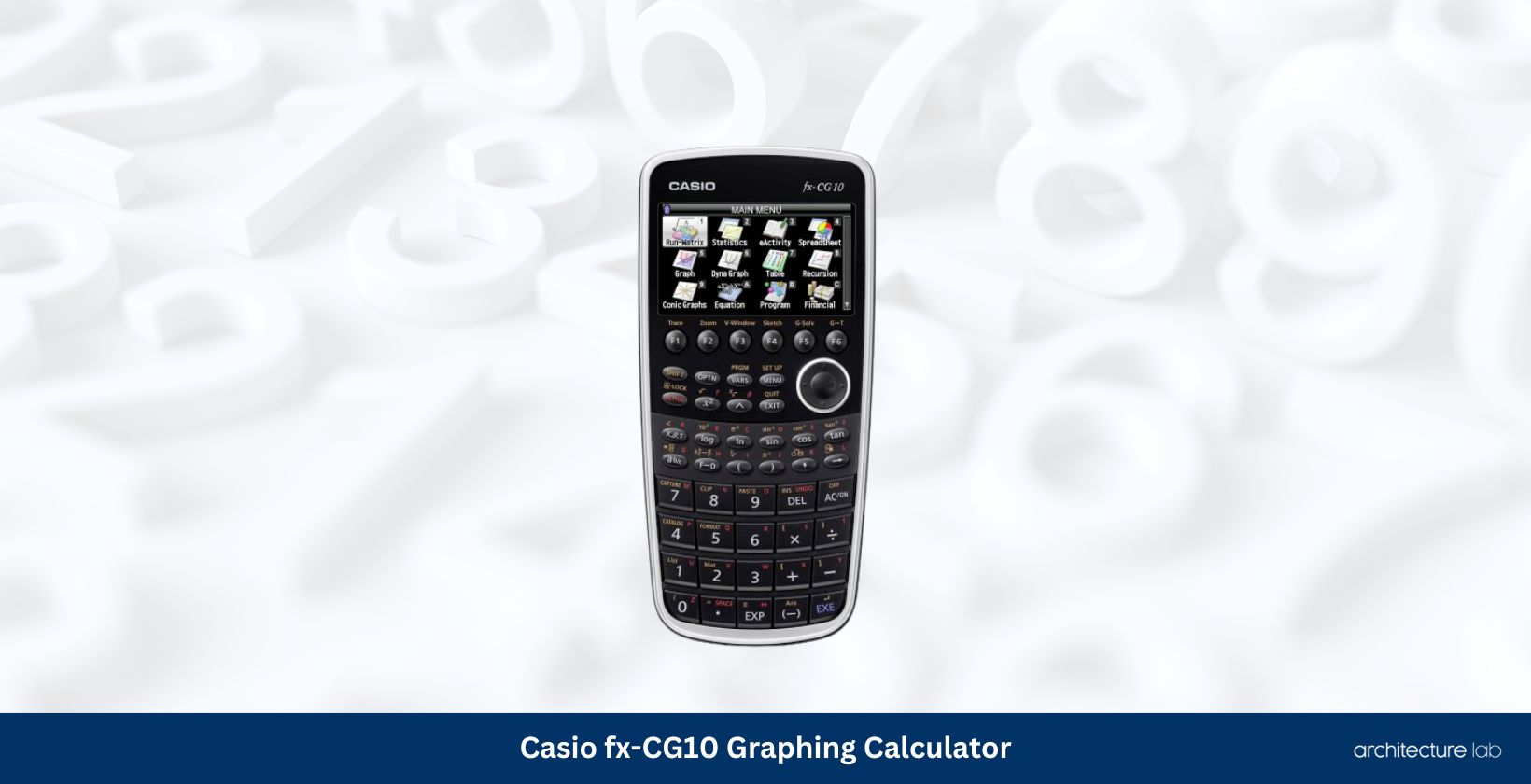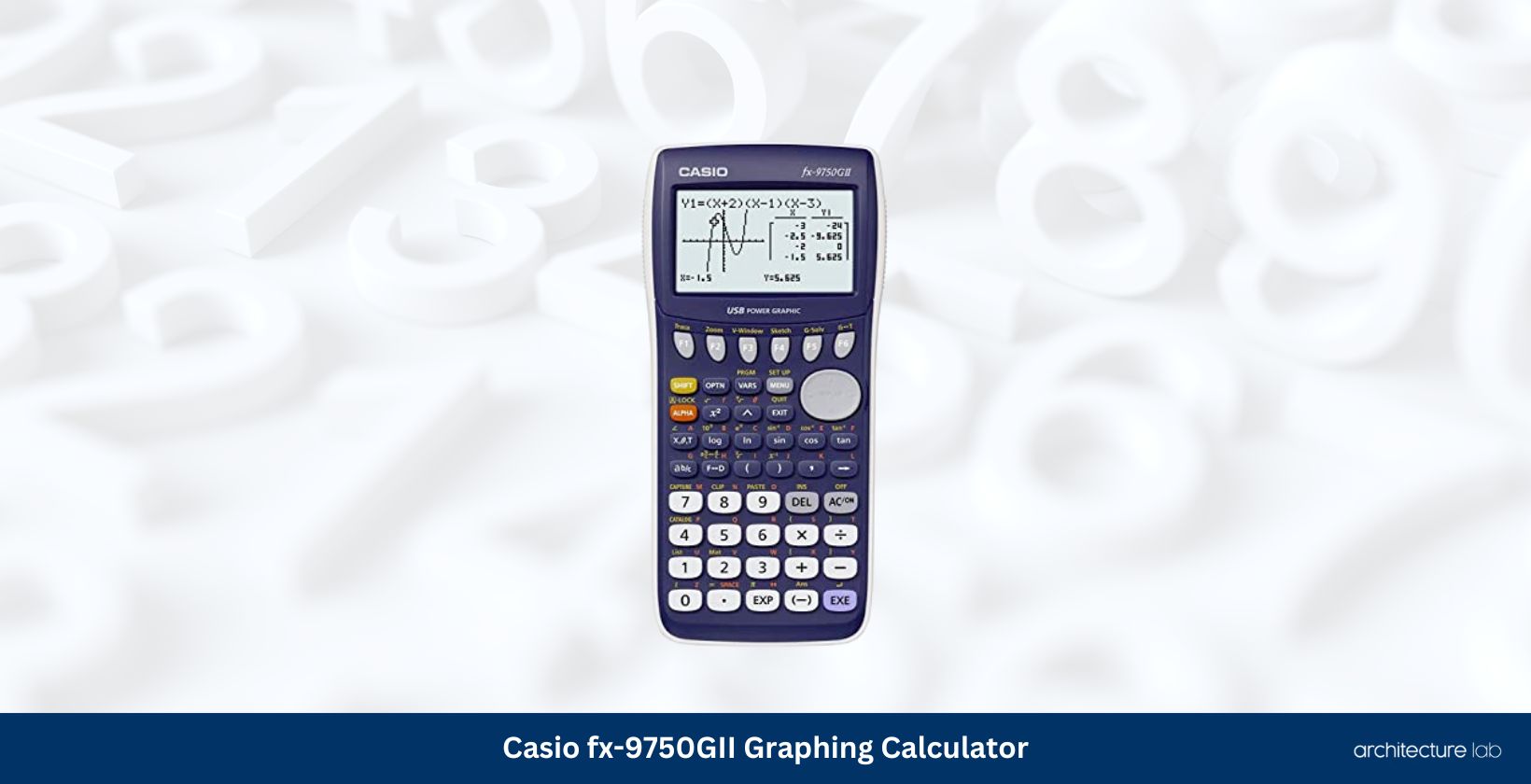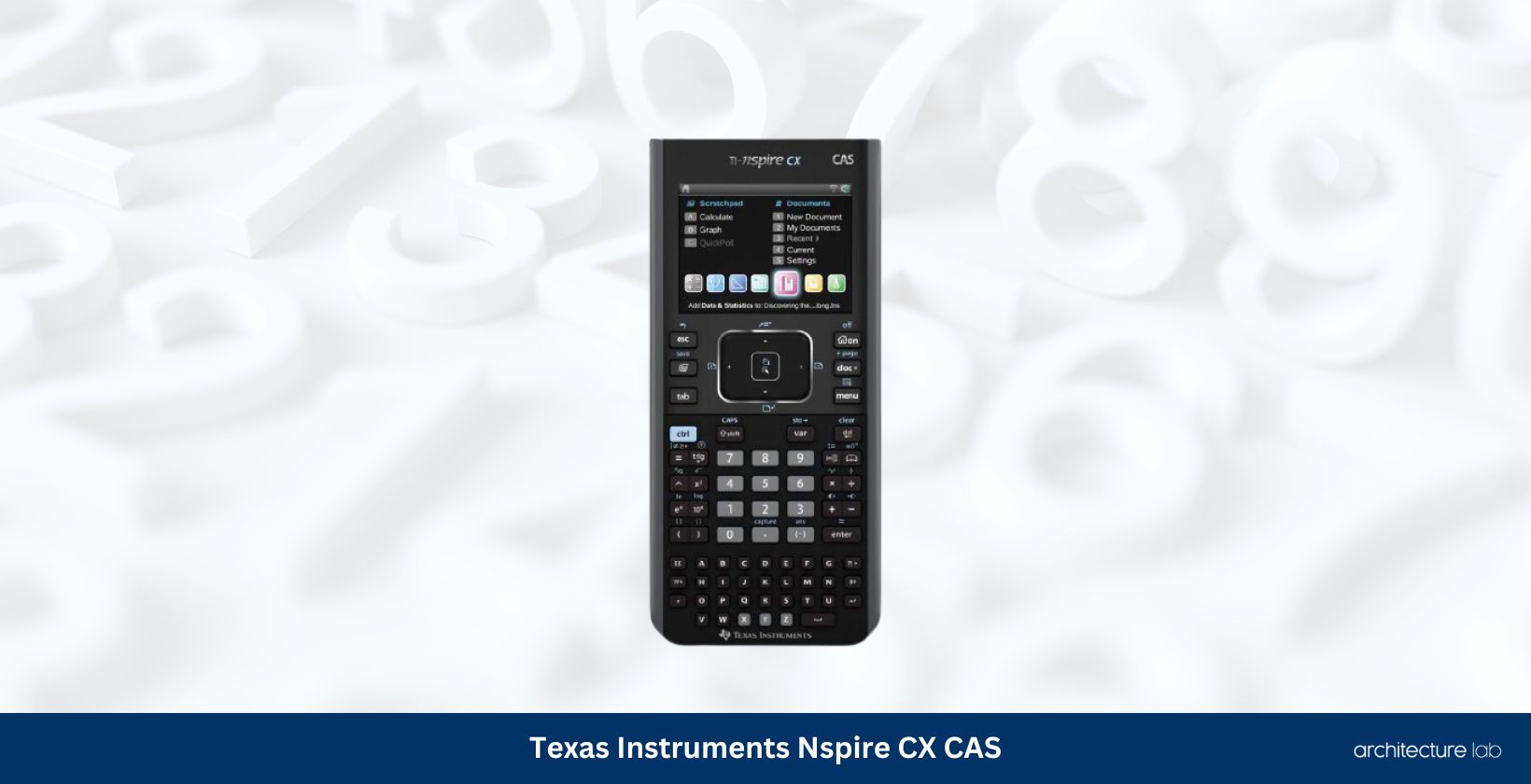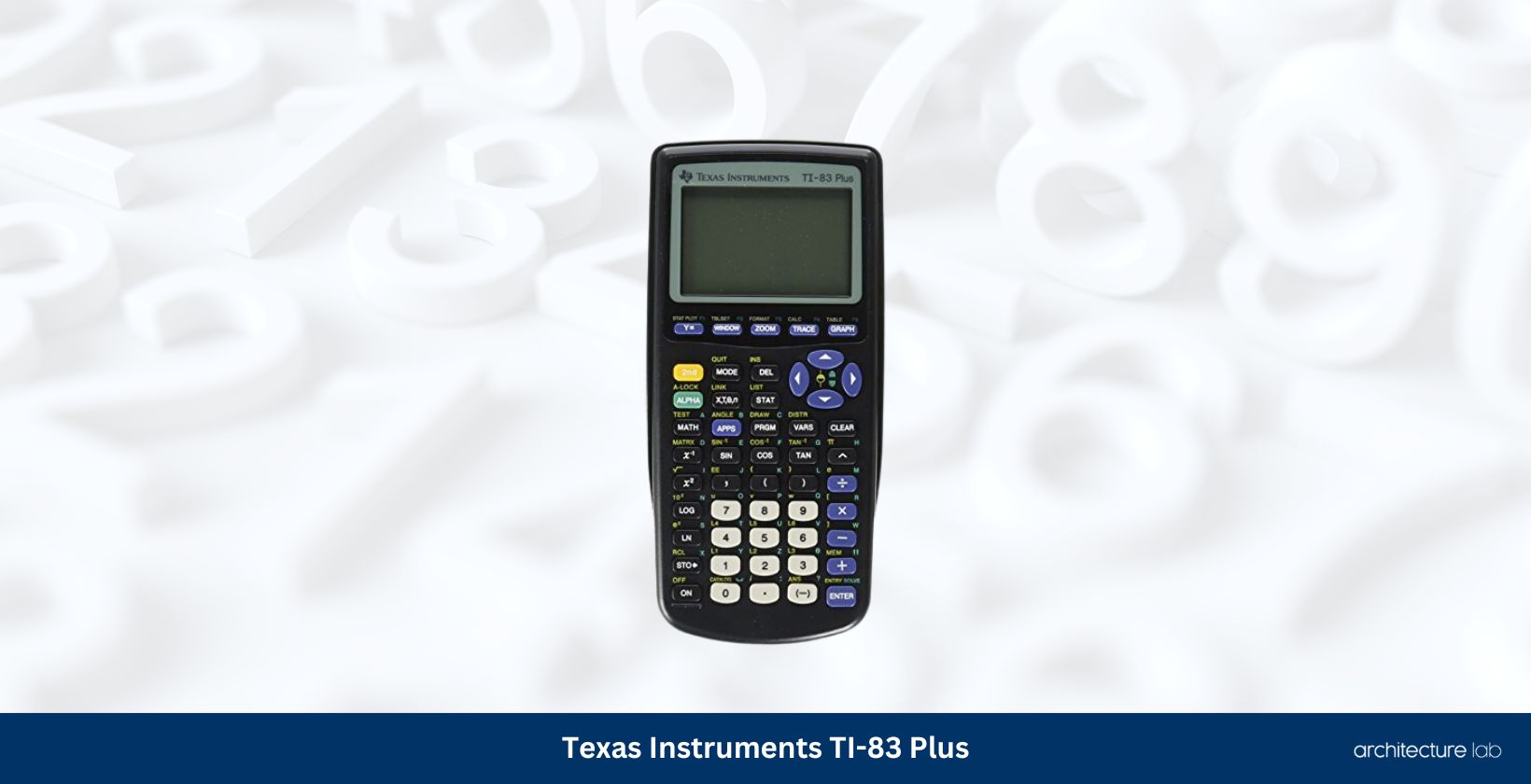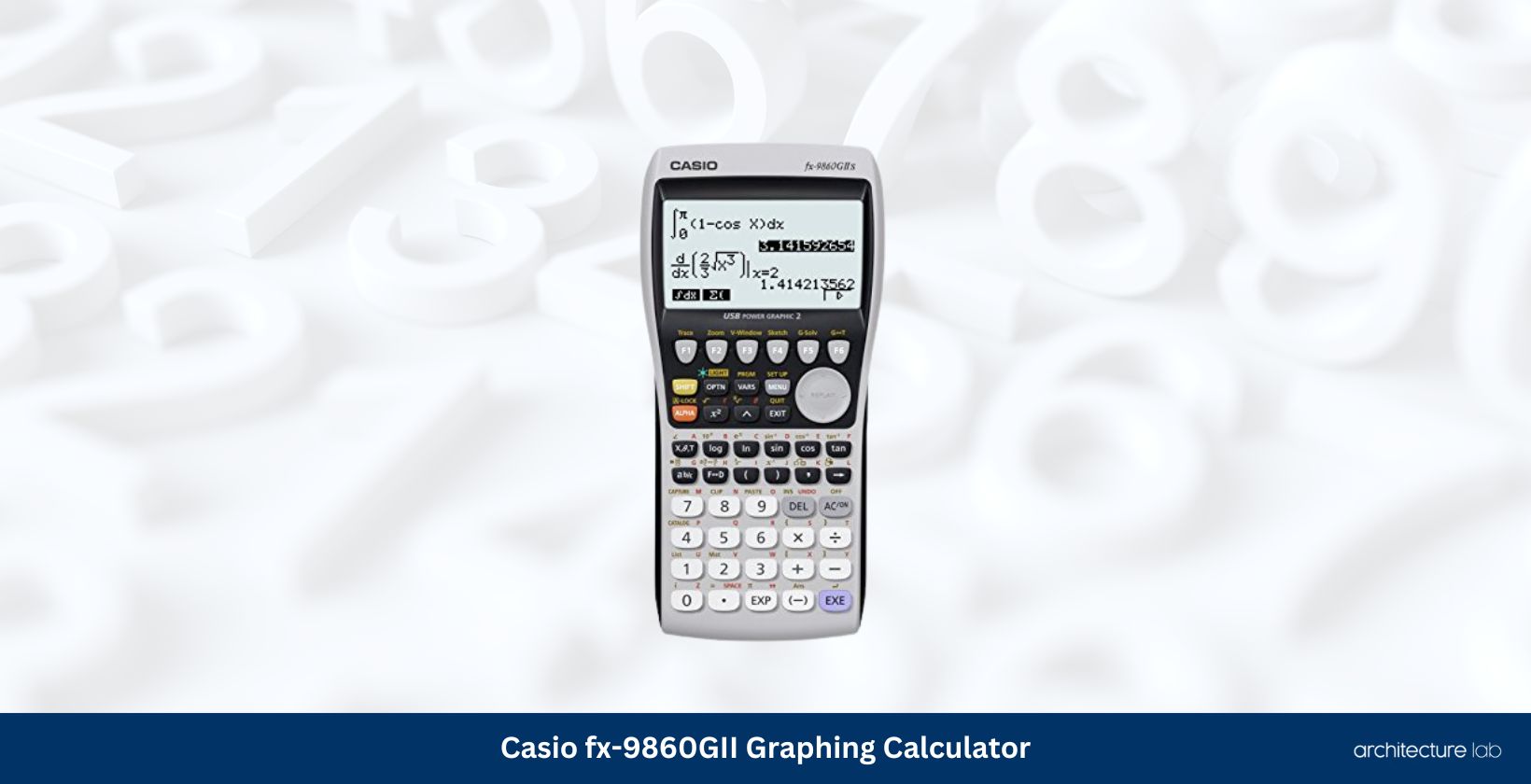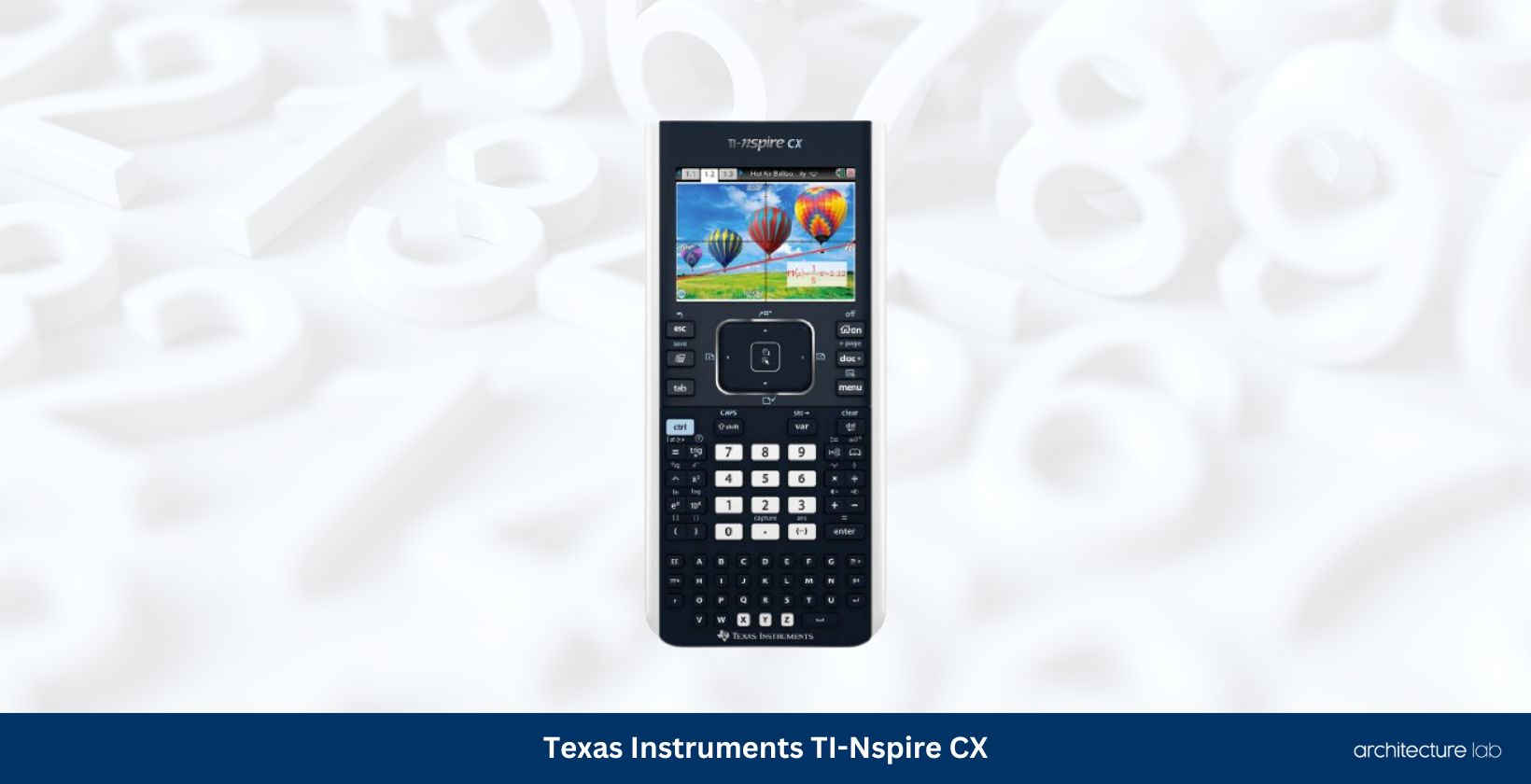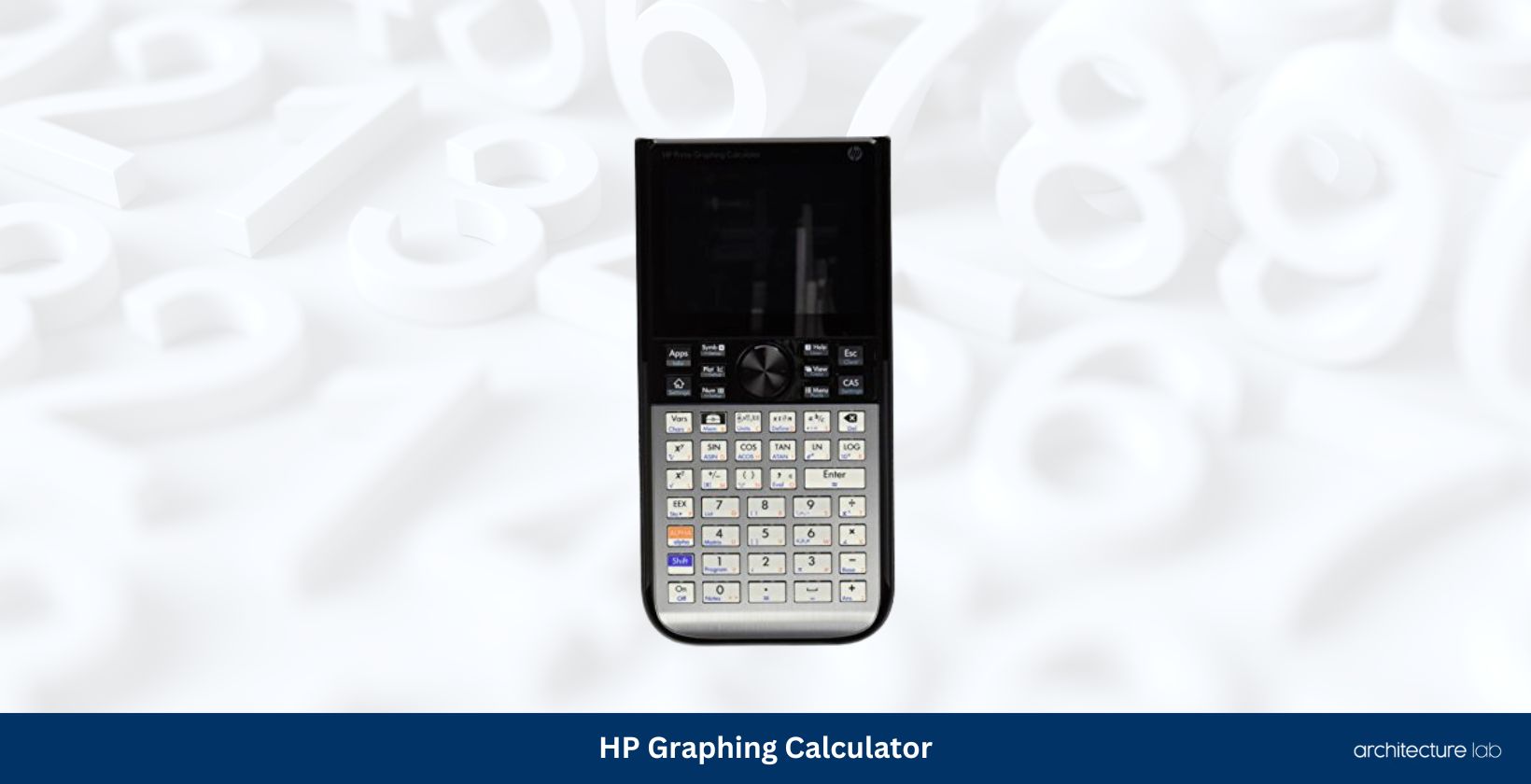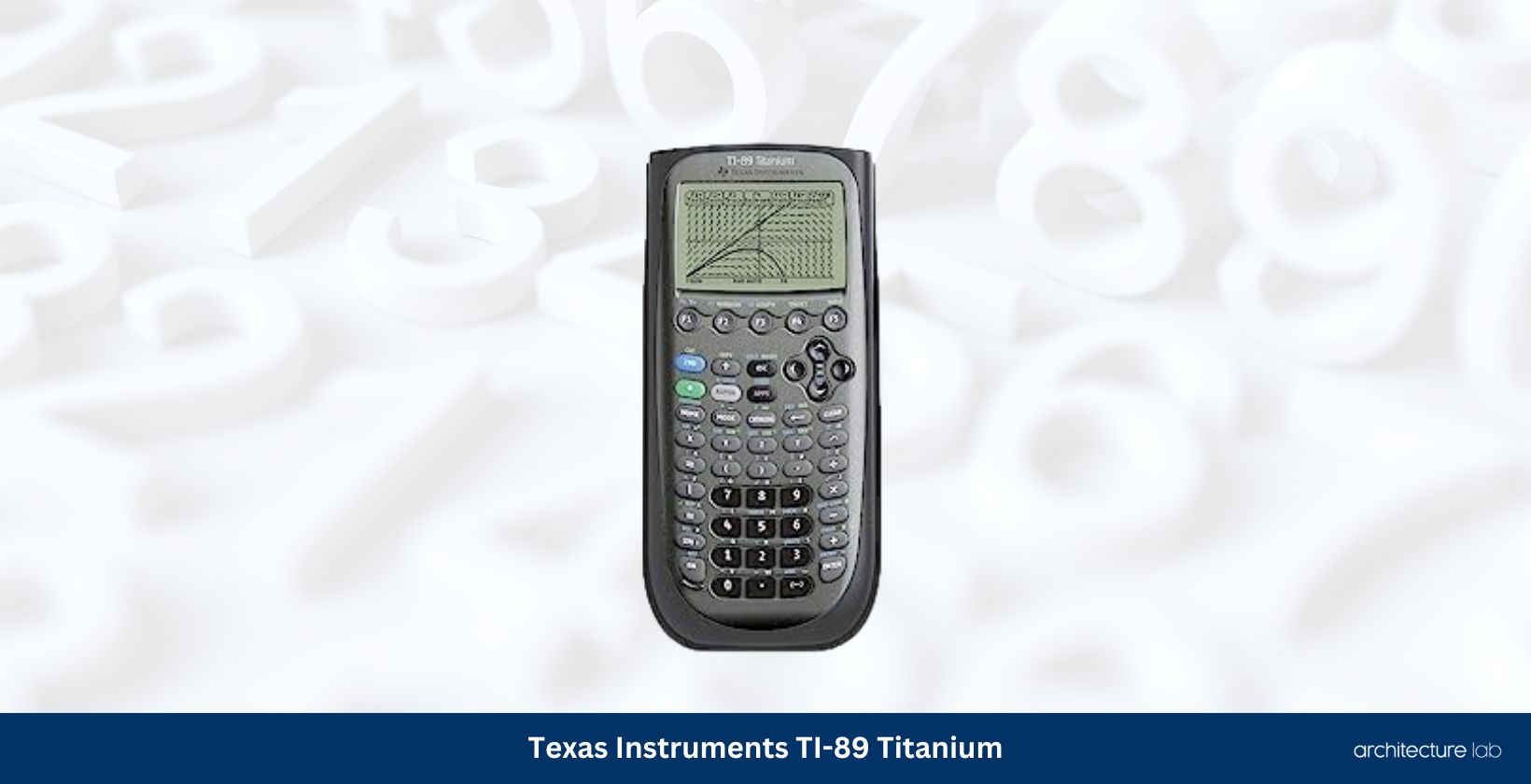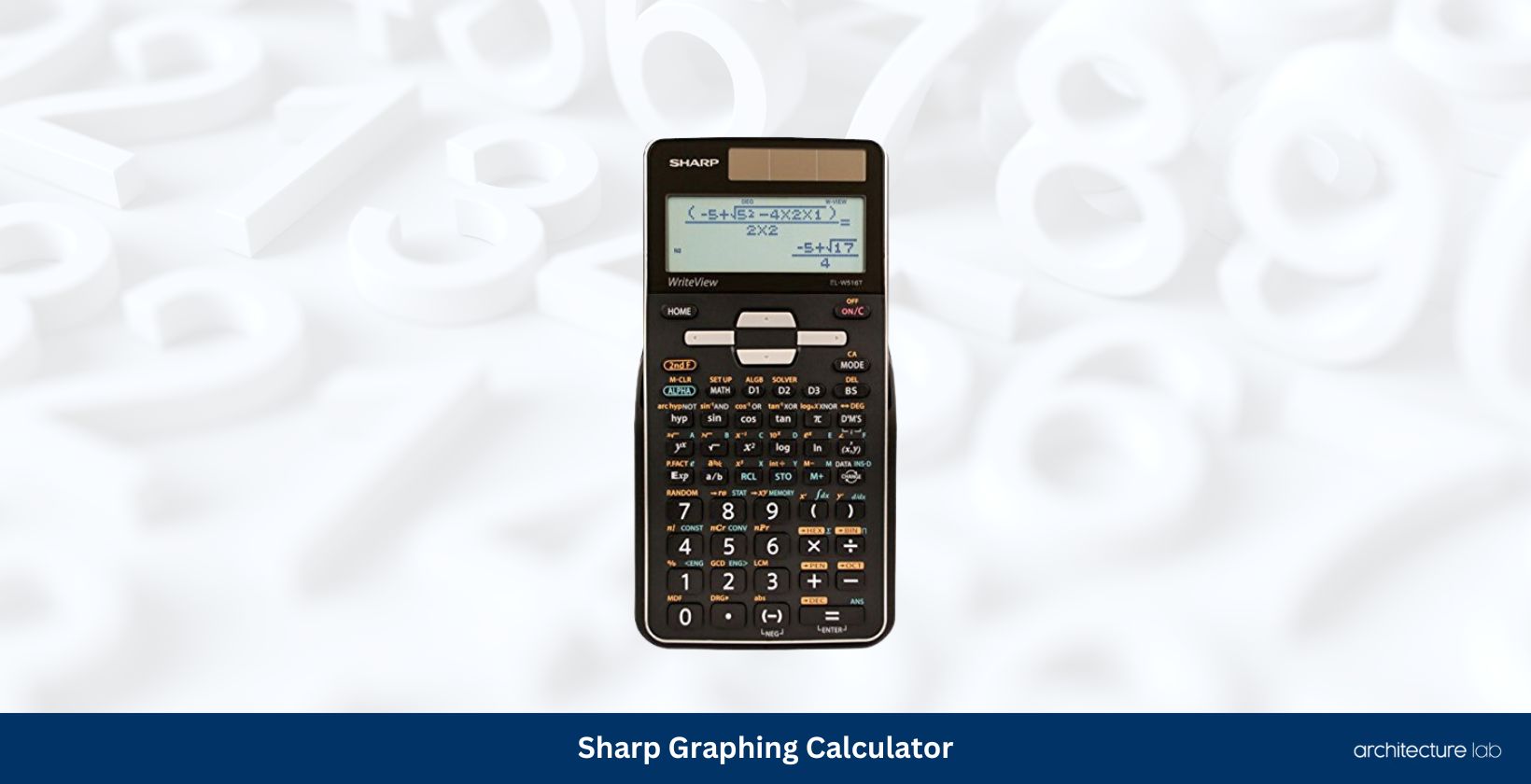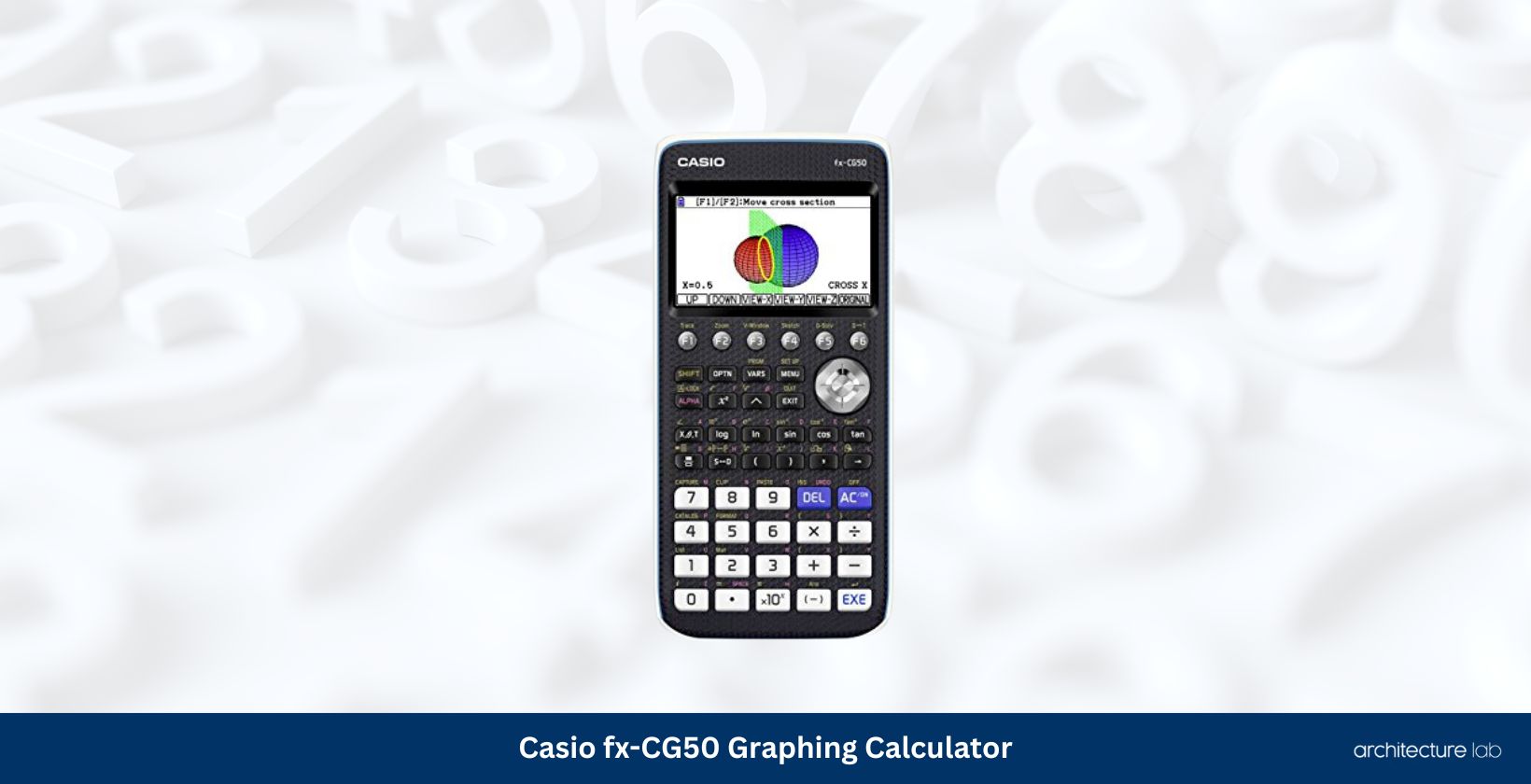We all can relate to the lost feeling that creeps in when we sit through a math or science class, without having our essential school supply…
By essential supply, we mean a ‘Graphing Calculator,’ which no one likes to share during classes when they are scraping through to find the right answer. And sometimes, it can take forever to solve those complicated problems on the SAT or other textbooks without using a graphing calculator. This can be a considerable hindrance, especially when you’re seated for a timed test.
But finding the right model is equally challenging, especially when the market is flooded with several options. Now, to help you end this struggle, we’ve picked out some of our favorite graphing calculators with easy-to-access functions.
Listed below are the best graphing calculators:
- Texas Instruments TI-84 Plus: The Texas Instruments TI-84 Plus graphing calculator is renowned in education for its essential graphing functions, it stands out for durability and affordability. The monochrome display and slightly blurry graph lines are its weaknesses.
- Texas Instruments TI-84 Plus CE: This Texas Instruments graphing calculator is an upgraded, faster version of the TI-84 Plus, with a 154 KB memory and a high-resolution color screen. It has a slower graphing speed due to the colored display.
- Casio FX-CG10 PRIZM: The Casio FX-CG10 is a graphing calculator known for complex problem-solving and a high-resolution color display. Its advanced functionalities can be complex for some.
- Casio FX-9750GII: The Casio FX-9750GII graphing calculator is great for entry-level users, known for accuracy, efficiency, and valuable functions. A steep learning curve is an issue.
- Texas Instruments Nspire CX CAS: A graphing calculator that is excellent for everyday use with advanced functionalities, multiple graphs support, and a backlit color display. The software may crash due to prolonged use.
1. Texas Instruments TI-84 Plus – Best for Budget-conscious Students
The TI-84 Plus has been one of the most popular models in the public school system. It comes equipped with a ton of essential functions that will effortlessly meet all your graphing needs. This black-and-white version has a lower price tag, and it has been designed with the requirements of a high school student in mind.
Experience
This model is accepted in the education community and can be used by almost every standardized test taker, irrespective of whether they are taking the ACT, PSAT, or SAT. You can get access to the advanced functions by pulling down the display menus. And the best part, the calculator features both vertical and horizontal split-screen options.
We want to express thanks to the 2.53 MP operating system because it gave the ‘math print’ to this calculator. You will find those exponents look like exponents, fractions look like fractions, and much more.
It also comes with a lot of new templates that help to simplify advanced calculus and algebra like summations – 10 logs, integrals, etc. Moreover, you can scroll up to ‘edit’ the previous calculations, and there is a series of ‘pop-up’ windows, which are accessible via the F1-F4 keys.
The TI-84 Plus is also equipped with an i/o port that can be used for communicating with other Texas Instrument products. It runs on four AAA batteries, and the lithium battery backup helps to protect the RAM. Overall, this graphing calculator is built like a tank that showcases its durability, and it’s also priced reasonably.
What We Like
- Simple user mechanism
- Ideal for high school math
- Incredible memory functions
- Hardly runs out of batteries
What We Don’t Like
- The graph lines are somewhat blurry
2. Texas Instruments TI-84 Plus CE – Best for Colored Display
This is the latest TI-84 calculator by Texas Instruments, which is widely trusted by students and teachers in American classrooms. It shares many standard features with its predecessor, which makes it easier to understand specific updates in the TI-84 Plus CE.
If you have a flexible budget, then do gives this colored version a try!
Experience
After having used the TI-84 Plus for several years, we can see a massive improvement in technology that has been smartly incorporated into the TI-84 Plus CE. It has the fastest processor among all the earlier versions. But again, that depends on the task at hand.
For instance, when a task requires printing or graphing something on the display screen, then it takes a few extra seconds to load. On the other hand, tasks that require internal computing can be completed early as the device quickly process such data.
This new device is preloaded with more than ten applications, which include correct math notation, inequality graphing, and data collection. Moreover, if you’re doing a specific type of math, you can change the settings to put the calculator in a particular mode- change from degrees to medians, calculate real or unreal numbers, and many more.
Since it also has MathPrint, it gets easier to read the expressions that are printed on the screen. The design and construction of this graphing calculator make it worth every penny. Plus, it features a full-color backlit display with high resolution and a sleek design. This full-color screen enhances the overall learning experience with color-coded plots, equations, and objects.
What We Like
- Hi-resolution color screen
- A large amount of RAM (154,000 bytes)
- Easy to read
- Implementation of MathPrint
What We Don’t Like
- Graphing speed is lowered because of the colored screen
3. The Casio FX-CG10 PRIZM Color Graphing Calculator – Best for Advanced Functionality
The Casio FX-CG10 is one of the advanced graphing calculators that you can opt for. It comes with a full-color LCD that takes your graphing experiences to a whole new level. According to the manufacturer, this unit is designed for those who have a knack to solve the most complex mathematical problems.
Experience
This graphing calculator has a pretty simple design and features a high-resolution LCD that has over 65,000 colors. It has a pretty detailed screen when compared to the other products on this list. So you won’t face any problem with clarity as you can easily understand the graph lines and numbers. The device is useful for college math classes and even high school.
Even though the screen is about 3.7 inches, you can create graphs over mathematical problems to have a better understanding of what’s being taught. It can help you create 3D graphing designs that enhance your knowledge of complex graphs. The 16MB storage supports the menu-driven interface that has easier access to intricate calculator functions.
Furthermore, it has a PC link port that allows you to connect your device without any hassle, and exchanging programs is relatively simple. Similarly, the accelerated processing speed is about three to five times faster than most conventional models. Finally, this makes it more efficient in terms of operation and learning regular math lessons.
What We Like
- Features a fraction key
- Can solve complex number problems
- Built-in spreadsheet application
- Can be used for creating graphs over real-life pictures
What We Don’t Like
- Complex functionalities
4. Casio FX-9750GII Graphing Calculator – Best for Entry-level Users
Casio has been a household name for its high-grade electronic products, so there’s no doubt as to why we have included FX-9750GII on this list. This unit is equipped with all the functionalities that are required for an entry-level graphing calculator. It has been designed to fit the needs of regular math coursework, starting from Pre-Algebra to Statistics and AP Calculus.
Experience
This graphing calculator is known for its efficiency and accuracy which comes in conjunction with an on-screen menu that provides easy access to many advanced functions. It’s allowed for PSAT, SAT, ACT, and many other tests, with this it has garnered a lot of attention. Plus, the reasonable price tag makes it an excellent bargain for the quality.
The high-resolution LCD features an enlarged dot-area technology that helps to enhance the visuals. You’ll notice that the lines and curves tend to be more clear and easier to see and understand. Besides that, it comes with a high-speed CPU that processes complex graphs and calculations quickly and with precision. This is what we generally need during the timed tests.
However, if you’ll be using this model for the first time, it might be a little tricky. But you’ll find a lot of tutorials online that will help in simplifying the overall functionalities. It includes a built-in USB port for exchanging programs with other devices and runs on four AAA batteries.
All in all, the intuitive software design of this model will assist you in grasping mathematical concepts by encouraging you to comprehend the process with ease.
What We Like
- Random integers can be taken down
- Allows for all types of regression calculations
- Stands out for the chi-squared GOF function
- Unit conversion available
What We Don’t Like
- Has a steep learning curve
5. Texas Instruments Nspire CX CAS Graphing Calculator – Best for Everyday Use
Texas Instruments has been ruling the market with some incredible graphing calculators. The Nspire CX CAS model is suitable for everyday use. Even more so, if you’re looking to increase your mathematical computation skills either as a student or professional. It features an elaborate set of advanced functionalities that are helpful for regular, as well as engineering classes.
Experience
The Nspire model is a powerful calculator that lets you create 3D graphic functions because of which you can import digital images and place equations and graphs on them. This depicts why this calculator scores high in terms of its functionality. It also provides graphical representations of the highest quality, and you can store them in the form of documents.
Another feature that we appreciate is the ability to make multiple graphs for mathematical equations. When you have multiple graphs on the display screen, it makes it simple to understand the relationship between each of the graphs.
You can also enter equations in the form of proper notation- with subscript and superscript, which is the MathScript that is shown in the textbook. Plus, the title has the word CAS which means “Computational Algebra System.” This functionality helps you manipulate the equations and solve them for any variable with the given question.
Speaking of questions, this calculator is approved for use on the AP tests and also the PSAT and SAT exams. Ultimately, it’s a smart tool that supports color-coded graphs, long battery life, and features additional software that comes of great use while solving complex math computations.
What We Like
- Rechargeable battery
- You can enter notes, & comments apart from doing calculations
- Supports in comprehending complex problems
- Has a backlit color display
What We Don’t Like
- The software might crash due to prolonged use
6. Texas Instruments TI-83 Plus
The TI-83 Plus is more of a vintage graphing calculator that has been flourishing since it was released in 1999. This makes for another great entry-level calculator that’s suitable for high school students with maths and science courses. And you don’t have to extend your budget for purchasing this graphing calculator.
Experience
We have been using the TI-83 Plus for many years altogether, and, indeed, the newer models are well-upgraded to solve complex mathematical problems quickly. But for a product that has been in the market for over 20 years, this makes a great deal.
The overall construction and design of this model are on point. It comes with an LCD screen that features a 64 x 96-pixel resolution with a bright display. This unit also has decent built-in memory storage that can analyze up to 10 matrices.
And just like the new models by Texa Instruments, the TI-83 also features split-screen functionality. This helps trace graphs with the table values placed side-by-side. But since it lacks the MathPrint, it might take a while to learn the calculator syntax.
Nevertheless, if you don’t need too many advanced functions for solving those problems, then this graphing calculator makes for a great choice.
What We Like
- Faster trigonometry and graphing functions
- Durable build quality
- Split-screen functionality
- Impact-resistant sliding case
What We Don’t Like
- Doesn’t include the MathPrint functionality
7. Casio FX-9860GII Graphing Calculator
The FX-9869GII is the newest version that debuted in 2009. Most of the functions in this graphing calculator are self-explanatory, you won’t take long to get the hang of this tool. When compared to the earlier models, this is upgraded with a faster processor and oversized, high-resolution display. With all its features, it’s a steal for the price tag.
Experience
We wanted a budget variant, and Texas Instruments was way beyond, so we had to look around for an ideal option. The FX-9860GII has a relatively simple mechanism. We have to press the menu button to get directed to the home screen that displays all of the calculator’s abilities, be it graphing, tables, conics, equation solver, etc.
The button layout is easy to learn and has a logical setup. This again makes it easier to navigate through the functions by selecting any of the pre-loaded icon menus. One of the unique features of a Casio graphing calculator is the backlighting that helps improve visibility.
You can use this unit comfortably for a variety of math classes, whether it’s Pre-Algebra, AP Calculus, or Statistics. It also features a high-speed processor and is allowed for use in AP tests and college entrance exams.
Overall, it’s a pretty strong device, and Casio hasn’t failed to deliver on its promise of value and simplicity with the FX-9860GII. We recommend this model for high school students because it’s easier to use, has the required features, and is cheaper compared to its competitors.
What We Like
- Has a faster processor
- Reasonable price tag
- Equipped with software for better comprehension of tricky mathematical concepts
- Connects to devices via USB
What We Don’t Like
- Batteries need to be changed often
8. Texas Instruments TI-Nspire CX Graphing Calculator
Texas Instruments is known for manufacturing some quality graphing calculators, and the TI-Nspire CX model is no exception. TI has taken all of the best features from the TI-83 and ensured to improve them for creating the Nspire series. It comes with a colorful, backlit display, a modern menu system, and a rechargeable lithium-ion battery, which can stand the test of time.
Experience
The new models of Texas Instruments are all about faster processing speed. Even though there is a change in the operating system, the look and feel are maintained like the older models, which is an advantage. It comes with version 5.0 which delivers enhanced graphing capabilities.
This unit can also import images and photos to overlay equations and graphs. The device supports .jpg, .bmp, .jpeg, and .png image formats. Moreover, when you integrate the math templates, it offers the ability to enter different expressions and see formulas, math symbols, and stacked fractions. And the best part, the interface is relatively easy to use.
What sets this model apart is its dynamic properties. On one screen itself, you can have a table of values, an equation, and a graph. You can also grab the graph and drag it into different shapes to adjust the three sides simultaneously.
The TI-Nspire CX, like its predecessor, features a sleek and lightweight design. Overall, this is a value-added product with a host of advanced calculus features.
What We Like
- Features drop-down menus
- Offers a variety of programs and applications
- Incredibly durable build
- Provides a higher resolution
What We Don’t Like
- Technology and interface are outdated
9. HP G8X92AA LA Prime v2 Graphing Calculator
The HP Prime v2 is considered to be one of the most efficient calculators by HP, and it’s generally allowed for most standardized tests. Our favorite thing about this unit is that it’s very simple to use when compared to its competitors. This unit comes with a reasonable price tag, which makes it a great deal for its power-packed performance and capabilities.
Experience
This unit has several unique features from its predecessor, such as data collection capabilities to wireless connectivity for teachers. It needs to be plugged in via the HP STREAMSMART 410 for storing the data in the calculator.
And the wireless connectivity feature can be used for connecting the graphing calculators of several students to one computer. This allows the teacher to keep track of all the screens. It also has many advanced functionalities that enable you to find the area, slope, intersect as well as extremum from your graph.
The Computer Algebra System (CAS) makes it easy to solve complex math problems that involve a range of symbols (like variables) instead of just using functions and numbers. So you can use the calculator for solving algebra equations and simplifying expressions. It also features a hi-resolution display that gives a clear image of the graphs.
Finally, the HP Prime has a classy presentation that is supported by a great operating system. All of the 18 factory applications are pretty useful with a set of extraordinary geometry applications that also allows for polar and parametric plotting. In short, it’s a complete package, and you’ll get to learn a lot using this graphing calculator.
What We Like
- Multi-touch display
- Pinch-to-zoom feature
- Handles complex numbers effortlessly
- User-friendly interface
What We Don’t Like
- Can take a while to learn all its functionalities
10. Texas Instruments TI-89 Titanium
The TI-89 is one of the most versatile graphing calculators that is ideal for both high school and college students. Just like other high-end models, it has a Computer Algebra System (CAS) that helps to explore and manipulate mathematical expressions in symbolic form. It comes with many features that will help you complete your sums with ease.
Experience
This graphing calculator is famous for its powerful CAS platform that allows you to factor in and expand variable expressions. You can solve any quadratic expressions by first completing the square, finding computer limits, antiderivatives, and also the exact location through an irrational form. While you answer complex questions, it also helps you visualize them.
It features sixteen preloaded software applications, which include CellSheet, NoteFolio, and EE Pro that will come of great use to engineering students. With these features, you can solve linear and nonlinear equations along with differential equations. Plus, you can solve differential equations symbolically or numerically. And it can also be graphed accordingly.
You can also add more programs for your upcoming classes and store the data for later use. The overall build is also pretty good with an impact-resistant case that protects the screen and the buttons when it’s stored. Finally, we recommend this unit mainly for college students and teachers because of its advanced functionalities.
What We Like
- Has a decent processing speed
- Features 16 pre-loaded apps
- Provides about 99 graphing equations
- Comes with a TI and USB connectivity
What We Don’t Like
- Doesn’t have colored display
11. Sharp EL-W516 TBSL
If you’re looking for a quality graphing calculator that comes within a limited budget, then you should consider this unit by Sharp.
The functions are on point, and it’s best suited for high school students. Getting a durable unit for an affordable price tag is nothing less than a pleasant surprise. Especially when you’re bagging a graphing calculator that’s easy to use and has excellent battery storage.
Experience
This graphing calculator might look like it’s a basic model because of its affordable price tag, but that’s not entirely true. It comes with seven different operation modes such as- normal, complex, stat, drill, list matrix, and equation.
And if that’s not enough, then you’ll also be getting 640 functions, so irrespective of how difficult the question is, you can find a way to get the answer. Moreover, the memory functions are pretty impressive with its range of memory keys, which includes- 8 temp, four definable, and four formulas. You can use it to store about nine assignable variables and 14 previous operations.
The design and function of this calculator are such that you can smoothly perform advanced scientific calculations, cubic, quadratic, and linear equations along with variable statistics. However, you cannot use it to solve inequalities for matrix calculations. But when it comes to regular mathematical problems you can solve them with ease by using the Sharp EL-W516 calculator.
What We Like
- Features 7 modes and 640 functions
- Durable product
- Has a large, WriteView screen
- Suitable for all budgets
What We Don’t Like
- Cannot be programmed
12. Casio FX-CG50 Color Graphing Calculator
If the colored screen is your primary search criterion, the FX-CG50 will most likely fit your needs. Casio has ensured that it delivers quality at a reasonable price. So you’ll be getting what you’ve been looking for without having to extend your budget. This graphing calculator supports 3D graphing and provides a high-quality display, which is a better option than the low-end options.
Experience
The Casio FX-CG50 is a mid-level graphing calculator that has better functions than the FX-9750GII. You won’t face any issues even if you’re a first-timer, because the layout is relatively easy to use and logical. Another standout feature in terms of usability is the high-resolution color screen. You’ll be able to notice more items in the menu section and pop-up information.
A convenient feature is the MathScript which displays the mathematical expressions in the same way that is written in the book. It also comes with a library of 21 applications that cover the integral set of mathematics.
Moreover, the graphing app is pretty good and can be used without any hassle. And the processor is relatively fast which allows graphing lines more quickly than its competitors.
One distinct feature of this unit is that it can graph 3D shapes. All in all, it’s worth the price tag, and the sturdy build ensures that it can withstand the onslaughts of regular usage without losing its efficiency.
What We Like
- User-friendly interface
- Faster processing speed
- Iterated color screen
- Built-in 3D graphing application
What We Don’t Like
- Has a thicker build when compared to its competitors
What is the Best Graphing Calculator?
If you’re searching for the best graphing calculator, listed below is a table comparing display type, memory capacity measured in megabytes and kilobytes, battery type, programmability feature, and connectivity options.
| Product | Display Type | Memory | Battery | Programmable | Connectivity | |
|---|---|---|---|---|---|---|
| Texas Instruments TI-84 Plus | Monochrome | 24 KB | 4 AAA | Yes | USB, TI-GRAPH | |
| Texas Instruments TI-84 Plus CE | Color | 154 KB | Rechargeable | Yes | USB, TI-GRAPH | |
| The Casio FX-CG10 PRIZM Color Graphing Calculator | Color | 61 KB | 4 AAA | Yes | USB | |
| Casio FX-9750GII Graphing Calculator | Monochrome | 62 KB | 4 AAA | Yes | USB | |
| Texas Instruments Nspire CX CAS Graphing Calculator | Color | 100 MB | Rechargeable | Yes | USB | |
| Texas Instruments TI-83 Plus | Monochrome | 24 KB | 4 AAA | Yes | USB | |
| Casio FX-9860GII Graphing Calculator | Monochrome | 1.5 MB | 4 AAA | Yes | USB | |
| Texas Instruments TI-Nspire CX Graphing Calculator | Texas Instruments TI-Nspire CX | Color | 100 MB | Rechargeable | Yes | USB, TI-GRAPH |
| HP G8X92AA LA Prime v2 Graphing Calculator | Monochrome | 32 MB | Rechargeable | Yes | USB | |
| Texas Instruments TI-89 Titanium | Monochrome | 188 KB | 4 AAA | Yes | USB | |
| Sharp EL-W516 TBSL | Monochrome | 4 MB | Solar | No | USB | |
| Casio FX CG50 Color Graphing Calculator | Color | 15 MB | 4 AAA | Yes | USB |
Buying Guide for the Best Graphing Calculator
Whenever we set out to buy a new product, it’s crucial to have a clear idea about the features as it helps in selecting the right product. Here’s a list of the different factors that you should consider before you purchase a graphing calculator:
Graphing capabilities
First and foremost, you need to determine what you’ll be using the calculator for. You should also consider the ability of the calculator to download programs and apps. When the device is equipped with such features, it can progress along with the user.
2nd (3rd) Functions
The graphing calculators generally feature buttons that have at least two functions. For instance, the COS button also has a COS-1 function. But for accessing the second function, you need to press the 2nd function key or SHIFT. This makes it convenient for the user because if there is plenty of extra buttons, it can create a cluttered look.
Processor
Another essential factor that you need to consider when looking for a graphing calculator is the processor. It not only controls the speed of the device but also helps in immediate decision-making. So, if you want to solve the problems quickly, then opt for a device with the fastest processor. And don’t forget to note that the processor speed is measured in Megahertz.
Screen Display
The screen display is mainly based on your preference. Most monochrome screens have similar functions. However, you have the option to opt for a bigger colored screen with hi-resolution that allows comprehending the graphs easily.
Battery Life
Most graphing calculators run on AAA batteries. However, if you’ll be using the calculator regularly, then it’s best to select the rechargeable version.
Price
The budget is one of the main determining factors that help you figure out whether the given options are suitable for you or not. Moreover, the price of the calculator also varies depending on the technology, and its ability to complete complicated tasks.
A professional like an architect or engineer should invest in high-end models, while students can benefit from mid-range or cheaper units.
How much memory do I need on my graphing calculator?
How much memory you need on your graphing calculator depends on your usage. Basic School assignments usually only require a few kilobytes. For complex calculations, vast data sets, or running advanced programs, a calculator with increased memory, in the range of megabytes, may be beneficial.
Can graphing calculators be used on standardized tests?
Yes, graphing calculators can be used on many standardized tests, including the SAT, ACT, and most AP exams. Keep in mind that some specific models may not be allowed, and it’s always essential to verify the calculator policy for each specific test, as some may have restrictions.
Can I connect my graphing calculator to my computer or other devices?
Yes, many modern graphing calculators can be connected to computers or other devices. Typically this is done via a USB cable but can also include wireless methods, depending on the model. The connectivity allows for easy data transfer and software updates.
What is the price range for a good graphing calculator?
The price range for a good graphing calculator varies depending on the brand, features, and memory capacity. Prices can range from around $50 for a basic model to over $150 for a high-end calculator with advanced features.
Having extensively tested these 12 graphing calculators, we have developed an in-depth understanding of their features, advantages, and limitations. From simple to complex calculations, these devices are crucial tools for students and professionals alike. Each calculator offers varying functionalities tailored to different needs, exploring which can assist individuals in making an informed decision.
Out of these 12 graphing calculators, here are the top five expert recommendations:
For high school students on a budget, the Texas Instruments TI-84 Plus is an ideal option. It offers essential functions, and incredible memory functions, and is approved for use in various standardized tests. The device is widely accepted in the educational community and provides both vertical and horizontal split-screen options, ensuring a user-friendly experience for those starting their journey with graphing calculators.
If the budget is flexible and you prefer a colored screen, the Texas Instruments TI-84 Plus CE is a good option. The device retains many standard features of its predecessor while incorporating a full-color backlit display and a faster processor. With its preloaded applications and MathPrint technology, you can more easily visualize and understand mathematical concepts.
The Casio FX-CG10 PRIZM is recommended for those who require advanced functionalities and a high-resolution color LCD screen. Suitable for both college and high school students, its features include 3D graphing designs, 16MB storage, and a PC link port for easy data exchange. Its functionality and design make it an excellent option for those tackling complex mathematical problems.
For entry-level users, the Casio FX-9750GII graphing calculator combines efficiency, accuracy, and an easy-to-use on-screen menu for a seamless experience. Its high-speed CPU ensures quick performance, while the high-resolution LCD guarantees clear visuals. Although it might have a bit of a learning curve, numerous tutorials are available online, and its affordability makes it an attractive option.
Finally, the Texas Instruments Nspire CX CAS graphing calculator is recommended for everyday use and those looking to improve their mathematical computation skills, both as a student and professionals. With an elaborate set of advanced functionalities, long battery life, and additional software, the Nspire CX CAS is perfect for users needing to solve complex mathematical computations in their academic or professional pursuits.

